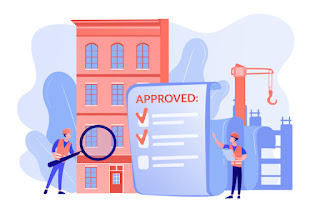COMMERCIAL BUILDING INSPECTIONS
Acquiring a commercial building is a big investment. A portfolio manager usually orders a building inspection and report before making a purchase. This provides crucial information about the building’s condition in order to make an informed decision.
Commercial real estate agents, investors, and anyone looking to buy or refinance a commercial or industrial building can all benefit from commercial building inspections also referred to as Property Condition Assessments (PCA). You will find in-depth details about the state of various commercial, industrial, and office building types in this report and every report is created by a licensed professional which is formatted to the requirements for conventional lenders (banks, insurance companies, etc.)
A thorough commercial building inspection reveals a facility’s true state and the associated repair expenses. During an inspection, what will a commercial building inspector be looking for specifically? Read on to learn the fundamentals of building inspection and the four things an inspector will make sure to identify.
Commercial Building Inspection – The Fundamentals
A commercial building inspector examines a building’s overall condition, from the foundation to the roof. Let’s first look at some fundamentals before diving right into the building inspection procedure.
What is a Commercial Building?
A building or other structure that is located on a piece of commercial real estate is called a commercial building. These structures are made to make money, either through capital gains or rental revenue. Office buildings, retail/restaurant buildings, multifamily housing, land, and other skyscrapers are the typical divisions for commercial structures.
What does a commercial building inspection seek to accomplish?
Return on investment (ROI) and residual value are important considerations in commercial real estate acquisitions. Portfolio managers want to know a few things: “What budget are they working with?”, “What profit will they gain from this investment?” and “What kind of deadlines are they looking at?”
This is where an inspection is useful. It illustrates the lifespans of five important building systems.
- Roofing
- Structural Integrity
- Electrical
- Plumbing
- Heating, Ventilation, and Cooling (HVAC)
Real estate management companies want to know whether replacing the roof, the HVAC system, or the electrical components is necessary due to a change in the building’s usage in the near future. These inquiries are assisted by a building audit or inspection. The final report gives the portfolio firm recommendations regarding whether or not purchasing the building is profitable.
A commercial building inspector will look for four things
A commercial property purchase is not only a significant investment, it also takes extensive thought and investigation before a decision can be made. Property condition assessments (PCAs) are frequently requested by investors, insurance lenders, portfolio lenders, and commercial mortgage-backed securities (CMBS) lenders to learn more about a property or to prepare for a purchase agreement.
A business inspector will concentrate on the following four items during the inspection.
- Exterior
The exterior of a building consists of more than just its external walls; it may also have parking lots, structures, landscaping, and roofing. The inspector evaluates the building’s structural soundness and emphasizes any costly repairs that may be required. To completely examine the outside condition of a structure, inspectors may rely on advice from roofing specialists, building contractors, building code inspectors, or other external professionals.
- Interior
This part of the inspection checks for safety-related risks and hazards as well as if interior areas comply with local building codes. The inspector examines the walls, flooring, restrooms, workplaces, kitchens, and other rooms in the building. This part of the inspection reveals whether any interior renovations are necessary.
- Documentation of The Building
Throughout the inspection process, commercial building inspectors examine many documents. They might look into appraisals, building plans, citations, occupancy certificates, building permits, evacuation plans, environmental studies, fire safety system records, floor plans, maintenance logs, and surveys. These records show the exact cost of building ownership and help the investor in estimating the property’s value.
A final Property Condition Report will include an inspector’s findings (PCR). It contains written documentation of observations along with pictures for explanation. It also contains any advice the inspector may have on how to carry out corrective measures or ask for professional follow-up testing. There will typically be an assessment of the cost of repairs and future replacements.
- The Five Major Systems
Electrical, mechanical, heating, plumbing, and air conditioning/ventilation are the five main systems found in commercial buildings. These systems are examined by inspectors to ensure they are in proper functioning order. The inspector provides an estimate of the cost of repair (or replacement) in the report if a system is found to be faulty. Sprinkler systems, building alarms, and fire safety systems are also part of this verification process.
Final Thoughts
The top portfolio managers know the full cost of their properties – not just today, but for decades to come.
Before investing in any commercial property, get a commercial building inspection to be able to fully understand the value of your property.
Our experts may go with you to check the condition of your condo unit and the building where it is located. We are fully qualified to conduct a condo inspection from beginning to end with a comprehensive final inspection report, whether it is for an acquisition or a sale.



Comments
Post a Comment